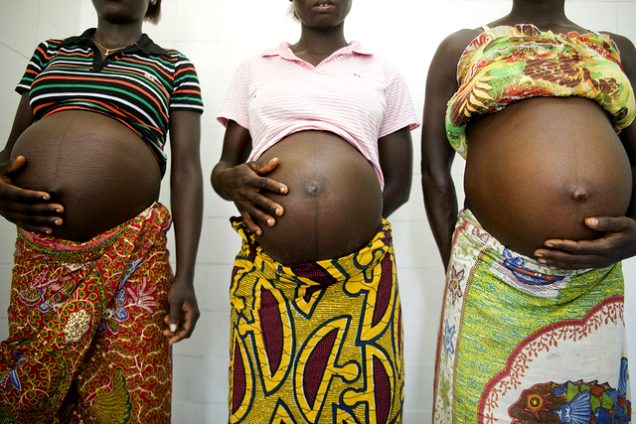The first-ever model of unintended pregnancies and abortion rates for 150 countries has estimated that 266,000 abortions were done in Ghana between 2015 and 2019.
The Guttmacher Institute, the World Health Organisation and the UN’s Human Reproduction Programme (HRP) released the model-based estimates of unintended pregnancy and abortion rates highlighting major disparities in access to sexual and reproductive health care.
The study analyses rates from 2015 to 2019, with the aim of providing deeper insights into access to sexual and reproductive health services in countries of all income levels across the globe.
In Ghana, the unintended pregnancy rate declined 14 per cent between 1990-1994 and 2015-2019, it said during the same period, the abortion rate increased 35 per cent with the share of unintended pregnancy ending in abortion rising from 23 per cent to 36 per cent.
It said pregnancy outcomes in Ghana in 2015-2019 recorded a total of 1.33 million annually with 741,000 being unintended and 266,000 ending in abortion, which is legal only to preserve the pregnant person’s health.
Dr. Herminia Palacio, President and CEO of the Guttmacher Institute, said, “To build sexual and reproductive health policies that are truly inclusive and equitable, we need to understand what is happening at a country level.”
“Having current and reliable data at hand will not only help identify and find solutions to disparities but also make a case for smarter investments that deliver impact.”
Alongside the estimates, Guttmacher, a leading research and policy entity committed to advancing global sexual and reproductive health, has published more detailed country profiles to allow decision-makers and health advocates to better understand and act on sexual and reproductive health needs in their countries, particularly for family planning, including contraception and comprehensive abortion care.
The new estimates indicate that unintended pregnancy and abortion rates vary widely between countries—even within the same region or geographic area.
The greatest variations were found in Latin America and sub-Saharan Africa, where for instance, unintended pregnancy rates in countries ranged from 41 to 107 per 1000 women, and 49 to 145 per 1000 women respectively.
These disparities are not shaped purely by income level in Europe, for example, most countries with higher unintended pregnancy rates than the regional average are classified as high-income, while the two countries with the lowest estimates are middle-income.
This finding reflects how barriers to accessing and using effective sexual and reproductive healthcare exist in settings with greater as well as fewer resources.
“These variations speak to the need for investment, even in regions with low unintended pregnancy rates, that empowers women and girls across countries to choose under what circumstances they want to have children,” says Jonathan Bearak, a senior research scientist at Guttmacher Institute and lead author of the article.
“The proportion of unintended pregnancies ending in abortion—as great as 68 per cent, even among countries that completely prohibited abortion—illustrates the strength of the desire of millions of women and adolescents to avoid unplanned childbearing.”
While the estimates go a long way in increasing the quality of evidence available, there remains a pressing need for more and better data. The availability of reliable abortion data varied substantially by region, ranging from 12 per cent of countries in Western Asia and Northern Africa to 73 per cent of countries in Europe and Northern America.
With additional investments in country data collection, it would be possible to make estimates with greater certainty, monitor trends and possibly assess the impact of large-scale programmes in the future.
Sexual and reproductive health and rights are an essential part of universal health coverage and are required to end discrimination against women and girls. These country-level estimates highlight the importance of equitable investment in comprehensive sexual and reproductive health care, and will further inform countries working to implement WHO’s new guidelines for quality abortion services.
“For good health, people in countries around the world need access to a comprehensive package of sexuality education, accurate family planning information and services, as well as quality abortion care,” said Dr. Bela Ganatra, who leads WHO’s Prevention of Unsafe Abortion unit.
“This research aims to support countries as they work to strengthen the life-saving services they provide for sexual and reproductive health and improve health outcomes – especially for women and girls.”
Latest Stories
-
Cooking competition takes centrestage at Joy FM Family Party In The Park
13 minutes -
Album review: ‘Wonder’ by Nana Fredua-Agyeman Jnr
2 hours -
Bouncy castle, sack race, and smiles galore: Joy FM Family Party takes over Aburi Gardens
2 hours -
Watch: Kwan Pa Band thrills patrons at Joy FM Family Party in the Park
2 hours -
Akufo-Addo partly to blame for NPP’s defeat in 2024 election – Frank Agyekum
2 hours -
Rapid urbanisation endangers children’s mental health – Psychiatrist warns
2 hours -
Kedland International School hosts maiden Festival of Nine Lessons and Carols
3 hours -
I didn’t speak against holding wrongdoers accountable – Rev. Kwadwo Bempah clarifies ORAL comment
4 hours -
RSS Developers to hold 3-day open house event on home purchasing from Friday, Dec. 27
4 hours -
Elikem Treveh: How TEIN UMaT students contributed significantly to NDC’s victory in Tarkwa Nsuaem constituency
4 hours -
Joy FM Family Party in the Park kicks off with excitement at Aburi Botanical Gardens
5 hours -
Australian mining giant files $277m claim against Ghana over gold project dispute
5 hours -
JP U-15 Cup 2024: Fadama Ajax wins maiden edition
5 hours -
Lured for Love, Caged for Cash: How an 80-year-old American seeking love was kidnapped in Ghana by a Nigerian gang
6 hours -
Star Oil Ltd @ 25: Driving Growth and Profitability with a Vision for Renewable Energy and a Sustainable Future
6 hours

